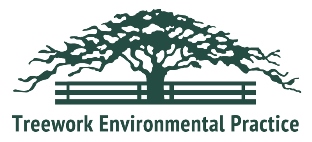Tree Micro-Ecology: Perceptions of Disease & Decay in Trees
Interpreting the Significance of Factors Affecting Tree Structure & Health
Southern Venue: 23 & 24 May 2005 – Pembroke Lodge, Richmond Park, Greater London
Northern Venue: 26 & 27 May 2005 – Fountains Abbey, Ripon, N. Yorkshire
There is an inventive trend in arboriculture to provide the practitioner with evidence-based information for diagnosis and decision-making. This seminar explored relationships between the tree and colonising micro-organisms, factors influencing health & decline, and techniques available to predict and remediate changes in condition.
With the increasing sophistication of techniques for the internal mapping of decay in trunks, including recent developments in the use of magnetic resonance and thermal imaging, it is important to examine the strengths and limitations of the devices concerned. This seminar explored these issues and the necessity for improving tree failure data at a national level, drawing from US experience.
Speakers
Neville Fay, Consultant, Treework Environmental Practice, UK
The background to seminar series & implications of issues being presented for arboriculture.
Dr Olaf Ribeiro, Arboricultural & Plant Disease Consultant, USA
Pathogenicity and co-existence in trees: Factors involved in pathogenesis by soil micro-organisms; exploring the processes and the terminology so as to inform remediation technology. Adverse effects of soil micro-flora on tree health & condition. Methods for diagnosis & control, including analytical techniques for establishing pathogen thresholds, microbial functional levels and fine-root status. Soil remediation techniques.
Dr David Lonsdale, UK
National tree condition surveys: their benefits & limitations: Drawing on the experience of the Condition Survey of Non-Woodland Trees in England and of collating observational evidence on modes of mechanical failure. Possibilities for developing a UK Tree Failure Database so as to optimize recording of failure events; deciding the type of data to be recorded.
Ed Hayes, BS, USA
Innovations in decay detection devices: Potential advantages & limitations: The assessment of failure-potential using decay detection devices in the context of tree-failure data, biomechanics and wind loading. Sudden limb drop: developing a model for exploration and documentation of the phenomenon based on the US experience. A tree failure database: the importance of collating data for improving understanding of tree risk.
Dr Giorgio Catena, Italy
Thermal imaging: a non-destructive technique to determine decay extent & significance in trees: The necessity for correct interpretation for tree hazard assessment; Developing & applying the technique for assessing habitat value of decay in veteran & ancient trees.
